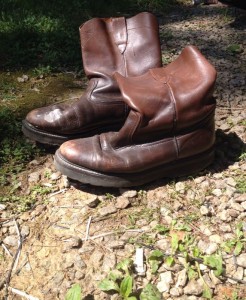One day, when I have the time, I plan to write a book about my immigration clients. There are so many compelling stories to tell. Each chapter will tell one of the stories. But now, while my time is more limited, I will summarize a few of the stories.
I first met Jose in 2001. There was a short period of time, about four months, when undocumented immigrants were able to get permanent residence if they had someone to sponsor them. Normally, with very few exceptions, there are no options for the undocumented to “get papers.” The end of Jose’s story is that, in 2011, more than ten years after he submitted his application, he finally became a permanent resident. The details, which combine a very slow bureaucracy with an inhumane quota system, are not important for this part of the story.
So now the middle part of the story. Jose came to the United States in 1999. His wife and three sons were starving, and he had no way to feed them. Meanwhile, there was a real estate boom in the United States, and builders were unable to find employees willing to do the necessary, very grueling outdoor work. Yet there was no legal mechanism to bring willing workers to the United States. The quota system was (and still is) such that it takes at least five or six years to bring a semi-skilled worker to the United States, from the time the employer starts the immigration application process.
This mismatch of supply and demand led Jose, and millions more like him, to risk illegal entry to the United States. It also led their employers to risk violating immigration laws by employing the undocumented. And parenthetically, it led millions of Americans to live in warm, comfortable homes built by undocumented workers, while complaining about all the “illegals taking American jobs.”
Jose, with tears in his eyes, one day told me the story of his trip to the United States. A cousin in Los Angeles had given him a number of tips, including how to find a smuggler. The cousin told him to leave all of his possessions at home, because he would be walking through a hellishly hot desert, and would need to carry two gallon jugs of water in order to survive. But the most important tip was to buy the best boots he could find, because the desert was full of snakes, and one bite could end Jose’s life.
Jose left his family at home and started his trip. In that time before cell phones, it was many days before Jose’s family learned that he had not become one of the statistics that had died of starvation, dehydration or snake bite, or been murdered by thieves or vigilantes. Jose had instead braved the elements, as well as the worst of human nature, so that he could support his starving family.
Jose made his way to northern Virginia, found work, and brought his family to the United States one by one. He paid taxes using a tax ID number, because he was not able to get a social security number. And he helped build warm, comfortable homes for Americans. He is now a permanent resident, and will soon be a US citizen.
Jose talks with pride about overcoming poverty and despair to become an important part of the American fabric. And he keeps with pride the boots that kept him alive during his overwhelmingly dangerous and frightening trip to America.
En un largo recorrido
Por sinuosos y escarpados caminos
Donde lo único que tocaba, con la suela de mis botas, eran las áridas arenas, las piedras y el sofocante calor de un desierto inhóspito, sólo con el fin de llegar a un lugar donde las penurias terminarían….
-JoseOn a long trek
Through winding and dug out paths
Where the only thing I could touch, with the soles of my boots, were the arid sands, the stones, and the suffocating heat of an inhospitable desert, with the only goal of arriving at a place where scarcity would end….
-Jose





